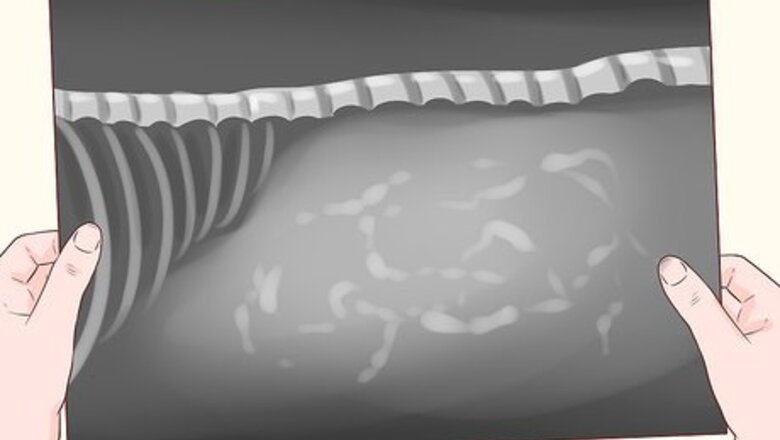
views
Helping Your Dog Before Whelping
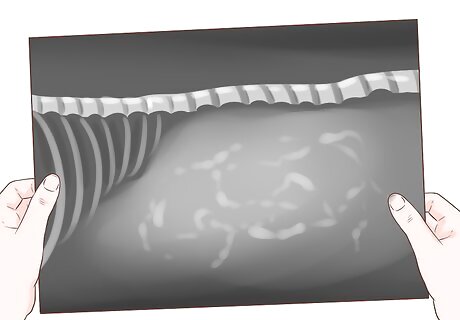
Have x-rays done. When a dog is near her due date, consider having an x-ray done. An x-ray can confirm that she's indeed still pregnant. It can also show how many pups she has. For instance, if she only has one large pup, that can make whelping difficult. A dog's gestation is generally about 63 days from ovulation. Remember that puppies aren't typically visible on x-rays until around the 45th day of pregnancy.
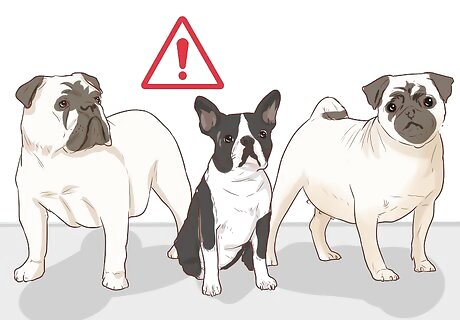
Know which breeds are more likely to have trouble. Some dogs are more prone to difficulty when whelping. Pugs, bulldogs, and Boston terriers are prime examples of breeds who may have more trouble. Usually, it's best to schedule a C-section for these dogs. Dogs with small litters are also more likely to have problems, as their puppies tend to grow larger.
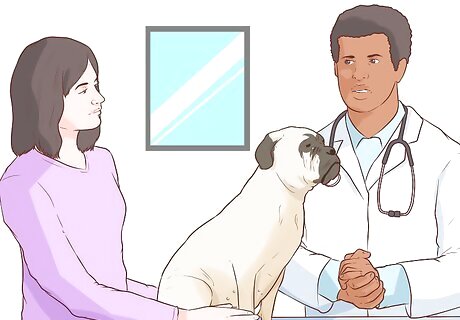
Return to the vet a few days after her due date. If your dog still hasn't had her puppies a few days past her due date, it's a good idea to take her into the vet. The vet can determine what problems she's having with the birth by examining her. You could say to your vet, "Since she's several days past her due date, I started to get worried. Is there anything we need to do for her?"
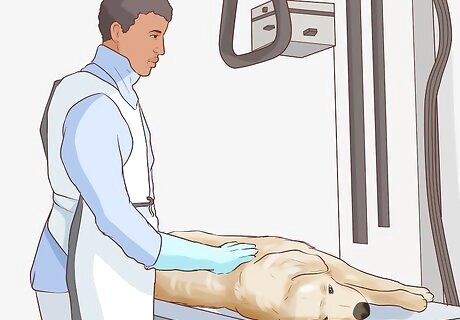
Expect medical intervention. If a dog is several days past her due date, your vet will likely take medical interventions. For instance, the vet may take another x-ray to see what's wrong. They may also physically help the dog along if possible, or give her medications to induce labor. If all else fails, your dog may need a C-section. You could say, "Can you explain to me in basic terms what's wrong with Lucy?" You could also ask what you need to do when you take the dog home to care for her.
Working Through Whelping
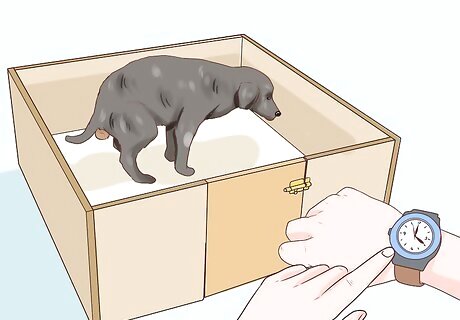
Understand the process can take a while. Just like human labor, a dog giving birth can take quite a long time. It may happen fairly quickly, within the space of 2 hours, but it can also take up to a full day for a dog to give birth with breaks in between pups. Keep an eye on the time to see how long it has been between each puppy, as after a few hours, you may want to take other steps. Make sure to have food and water available while the dog is giving birth, as she'll need to keep her strength up. Really, all you can do is wait for her to continue giving birth, with the exception of taking her for a walk.
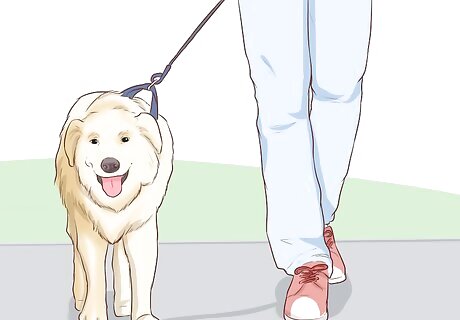
Take her out for a walk. If it's been a long time between puppies, more than one hour, you can try taking her outside for a walk. It doesn't have to be a long walk, but a short, fast walk can help her start delivering puppies again. She may not want to leave her puppies, but try to encourage her to come outside for a bit. You can carry her outside if she's willing or bribe her with treats.
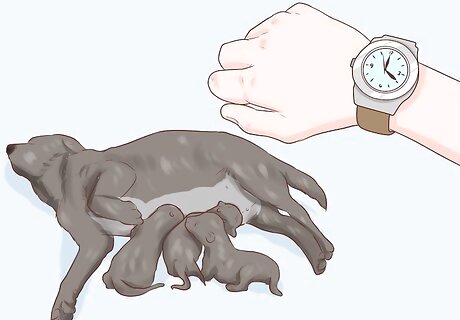
Know when to take action. If she rests for more than two hours (and you know there are more puppies to be born), talk to your vet. She may have uterine inertia, meaning her uterus doesn't want to deliver anymore puppies, or she might have a more serious problem, such as a ruptured uterus.
Helping a Straining Dog
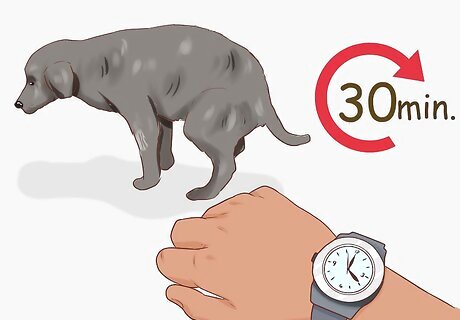
Wait 30 minutes. If you notice your dog is straining, you don't need to take immediate action. However, after half an hour, you should take action if your dog is straining without producing any puppies. That means she's having trouble giving birth. Try not to assist the dog yourself. While it may be difficult to resist the urge to help your dog through her labor, delivery injuries to both mother and pups are common when inexperienced people start to intervene. If you think help is needed, call your vet to get instruction or ask for a house-call.
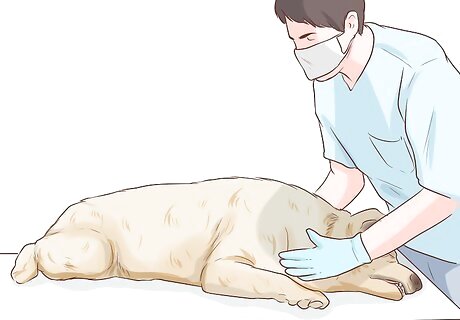
Go to the vet. If your dog has been straining for more than 30 minutes or if it's been at least two hours since the last puppy was born, you need to go to the vet. It may be that a puppy is too large to come out, and the vet will need to do a C-section. Also, two puppies may be wedged into the uterus, trying to come out. You should also take your dog to the vet in the first day or so after birth to make sure she is doing okay.
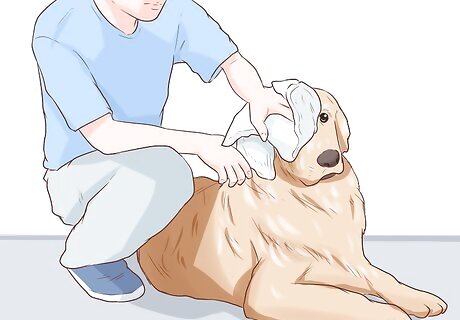
Clean up the dog and the area. When your dog gives birth, it's important to clean up the area around her by taking out any soiled blankets. Provide clean blankets for her and the pups. You should also wipe down the mother with a warm cloth, cleaning up any fluids on her. Be sure to gently dry her off afterwards by patting her with a towel. These tasks will help prevent the mother from developing an infection.
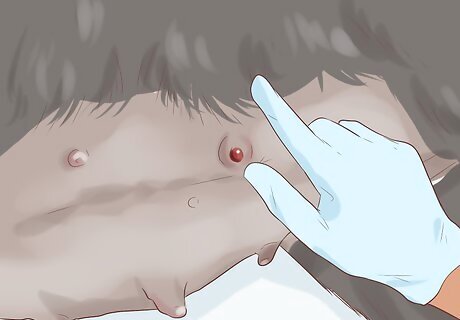
Watch for signs of infection. Pay attention to signs of infection after birth. Infection can develop in either the uterus or the teats. You should also watch for signs of low calcium, as that's another issue that a nursing dog can develop after giving birth. You should visit the vet if you notice symptoms of these conditions. Infection in the teats is characterized by increased pain, swelling, irritation, and redness. Also, if the milk turns green, yellow, or red and thickens, that's a sign of infection, as well. While your dog will have some drainage from the uterus, it's usually green, red, black, brown and odorless. If it changes to a pale or gray color or develops an odor, that indicates infection. If the drainage looks like active bleeding, take your dog to the vet immediately, as she could be experiencing a life-threatening hemorrhage. Low calcium will result in disorientation, loss of interest in her puppies, a fever, pain, whining, and stomach problems, as well as muscle tremors. If your dog develops this condition, she may lay on the floor with her legs sticking straight out.




















Comments
0 comment